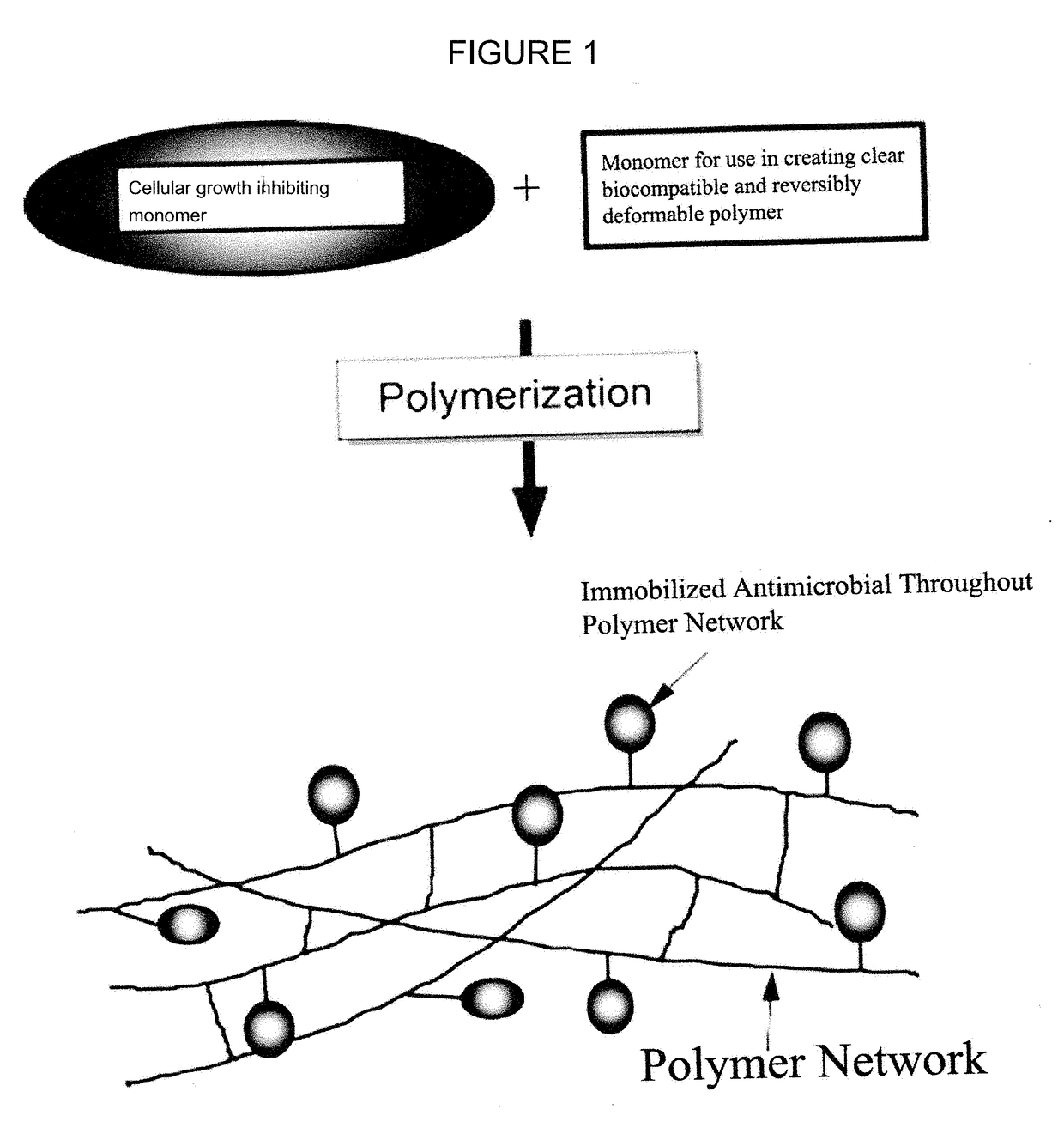Cell growth inhibiting copolymer for use in ophthalmic implants
a cell growth and copolymer technology, applied in the field of cell growth inhibition polymer for use in ophthalmic implants, can solve the problems of reducing the clinical efficacy of the device, reducing the vision of patients, and loss of vision, and achieve the effect of optimizing the implant function
- Summary
- Abstract
- Description
- Claims
- Application Information
AI Technical Summary
Benefits of technology
Problems solved by technology
Method used
Image
Examples
Embodiment Construction
[0014]The following description is presented to enable a person of ordinary skill in the art to make and use embodiments described herein. Descriptions of specific devices, techniques, and applications are provided only as examples. Various modifications to the examples described herein will be readily apparent to those of ordinary skill in the art, and the general principles defined herein may be applied to other examples and applications without departing from the spirit and scope of the disclosure. The word “exemplary” is used herein to mean “serving as an example illustration.” Any aspect or design described herein as “exemplary” is not necessarily to be construed as preferred or advantageous over other aspects or designs. Thus, the present disclosure is not intended to be limited to the examples described herein and shown but is to be accorded the scope consistent with the claims.
[0015]As used herein, reference to any biological drug includes any fragment, modification or varia...
PUM
| Property | Measurement | Unit |
|---|---|---|
| Hydrophobicity | aaaaa | aaaaa |
| Cell growth | aaaaa | aaaaa |
Abstract
Description
Claims
Application Information
 Login to View More
Login to View More - R&D
- Intellectual Property
- Life Sciences
- Materials
- Tech Scout
- Unparalleled Data Quality
- Higher Quality Content
- 60% Fewer Hallucinations
Browse by: Latest US Patents, China's latest patents, Technical Efficacy Thesaurus, Application Domain, Technology Topic, Popular Technical Reports.
© 2025 PatSnap. All rights reserved.Legal|Privacy policy|Modern Slavery Act Transparency Statement|Sitemap|About US| Contact US: help@patsnap.com

